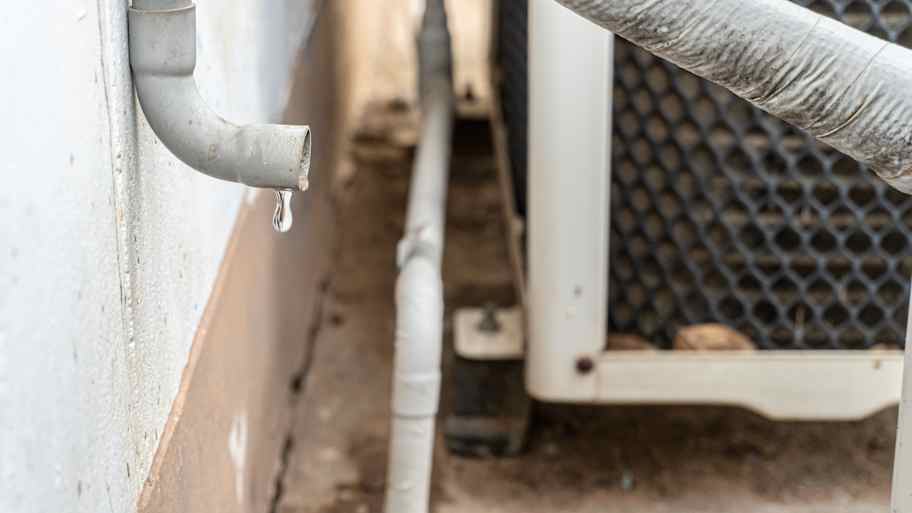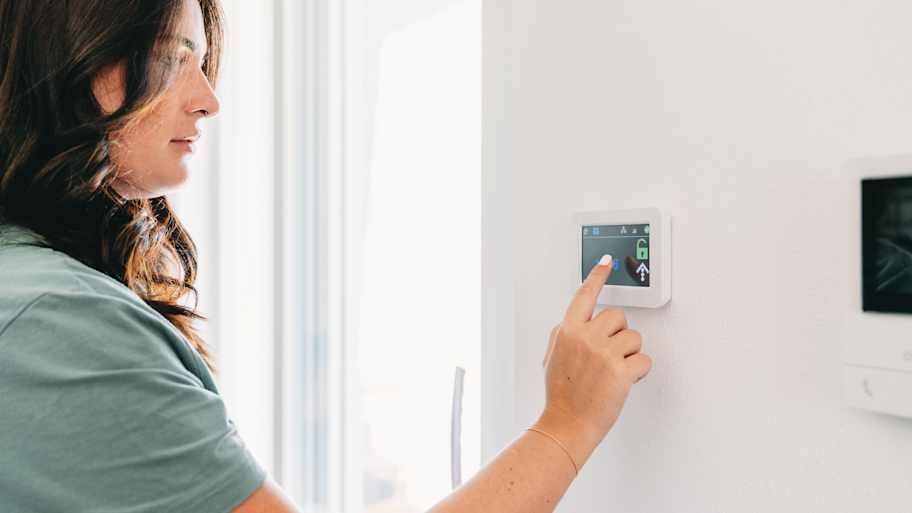
Discover the cost to install ductwork. Learn about average prices, cost factors, and tips to save money on your ductwork installation project.
Your condensate drain line plays a critical role in your home


Condensate drain lines direct condensation from your evaporator coils to the outside of your home.
They’re typically made of copper or white PVC pipe and run along your unit.
Drain lines can clog or produce slime, which can lead to flooding or other issues.
You should clean your drain line every month or two to prevent build-up.
When you first see water dripping from a condensate drain line, you may ask yourself why your AC is leaking water. Slow drips from a PVC pipe near your unit are perfectly normal and an essential part of your home’s cooling process. Learn more about this small but mighty part of your HVAC system in this article.

Like a cold glass of iced tea on a hot day, air conditioners experience a build-up of condensation during warmer seasons. As humidity rises and condensation builds up, your AC works hard to remove the moisture from the air via the condensate drain line. This line, typically made of white PVC or copper pipe, runs from your indoor unit to the outside of your home, where the water can safely drip or evaporate.
A condensate drain line is one of the lesser-known, but no less critical, parts of your HVAC system, because if you fail to remove the moisture, you can experience mold, mildew, or corrosion, all of which are dangerous to your system and your health.
Every AC unit has evaporator coils, where condensation builds up. Under these coils, a drip pan will be installed to collect condensation in one location. This drip pan directs water to and connects with your condensate drain line, where it will be routed outside.
If you haven’t noticed these parts of your unit before, don’t be surprised. You shouldn’t hear or notice too much water draining from your AC line. If you hear water running or see that your AC pan is full of water, it’s a sign that something is wrong.
Clogs are the most common issues associated with condensate drain lines, but there are other issues to watch out for as well.
Clogged drain line. Clogs occur when dust, mildew, or other debris accumulate and block water flow. If your line is clogged, you’ll notice a musty smell or standing water. Your home may also become warmer as your AC loses its efficiency.
Drain slime. While somewhat common, air conditioner drain slime is a pretty unappealing sight to see. Summertime in your drain line is the perfect environment for bacteria to grow (warm, moist, and dark), leading to slime. If left unchecked, it can clog your pipes.
Water leak. Damaged pipes, clogs, or dirty air filters can cause leaks in areas other than the drainpipe opening. The process for fixing AC unit leaks will depend on your specific situation.
Incorrect slope. Drain lines work with the help of gravity. If your drain line isn’t installed at the proper slope, water won’t drain correctly, leading to a host of issues.
The most important thing you can do to extend the lifetime of your drain line and your entire AC unit is to clean your AC drain line regularly. While a small clog may not seem like a big deal, it can lead to costly flooding, water damage, or electrical issues.
This process takes only 10 minutes and can prevent clogs, slime buildup, and other drainage issues that can cause havoc on your unit and your home. You can either flush the line with vinegar, clear the line with an air compressor or snake drain, or use a plunger to dislodge a clog.
From average costs to expert advice, get all the answers you need to get your job done.

Discover the cost to install ductwork. Learn about average prices, cost factors, and tips to save money on your ductwork installation project.

Find out the average humidifier repair cost, what impacts pricing, and how to save. Get expert tips to budget for your humidifier repair.

New AC compressor costs depend on factors like the compressor’s size and type. Read on to learn more about ac compressor cost factors, in this guide.

Keeping your home cool all summer can be a challenge. Read on to learn the pros and cons of dual-home air conditioners.

How do you know when your home’s AC is broken? Look for these five signs of a bad AC condenser.

Air-source heat pumps are an energy-efficient way to heat and cool your home. Learn the pros and cons of this heating method.